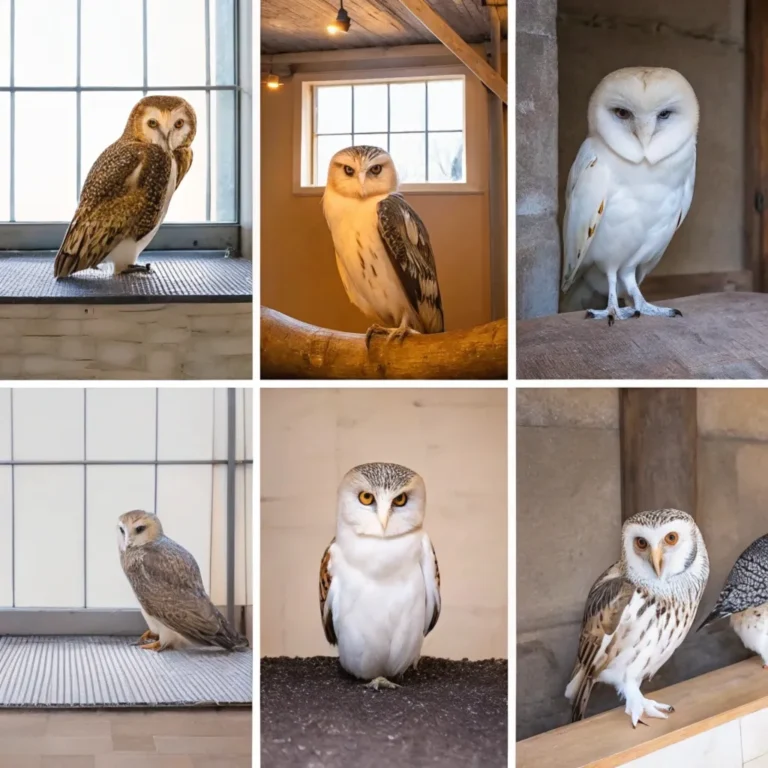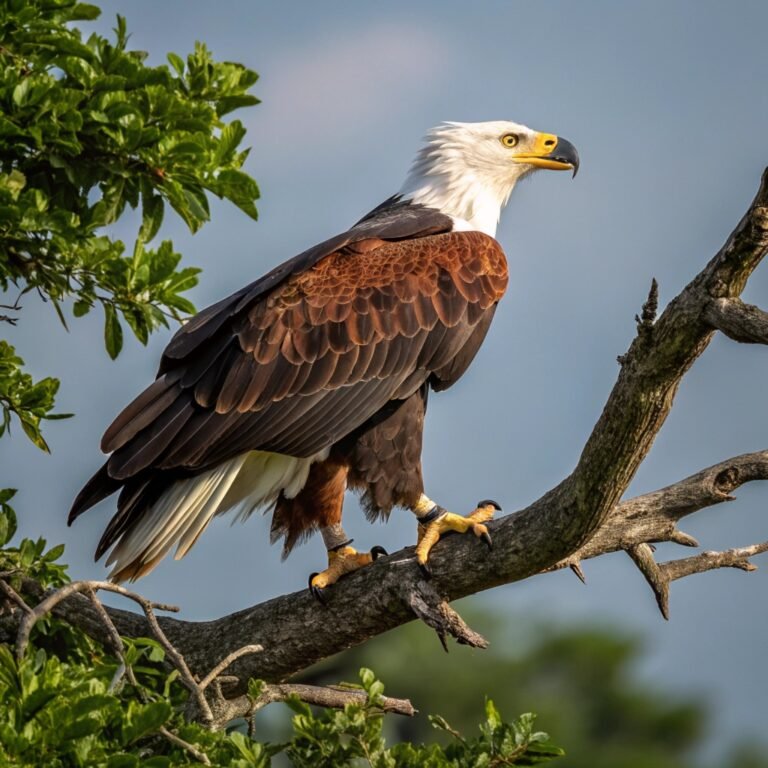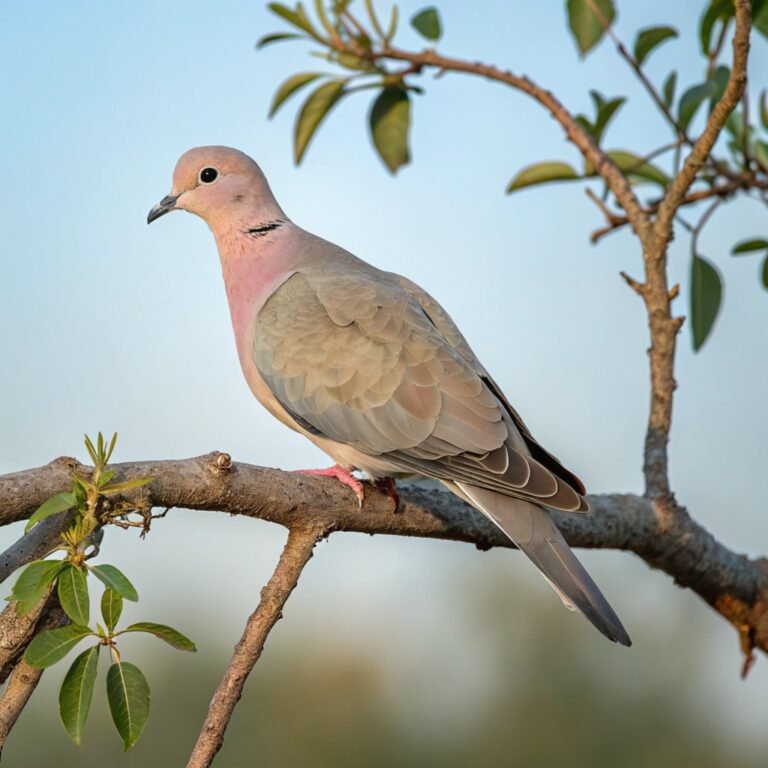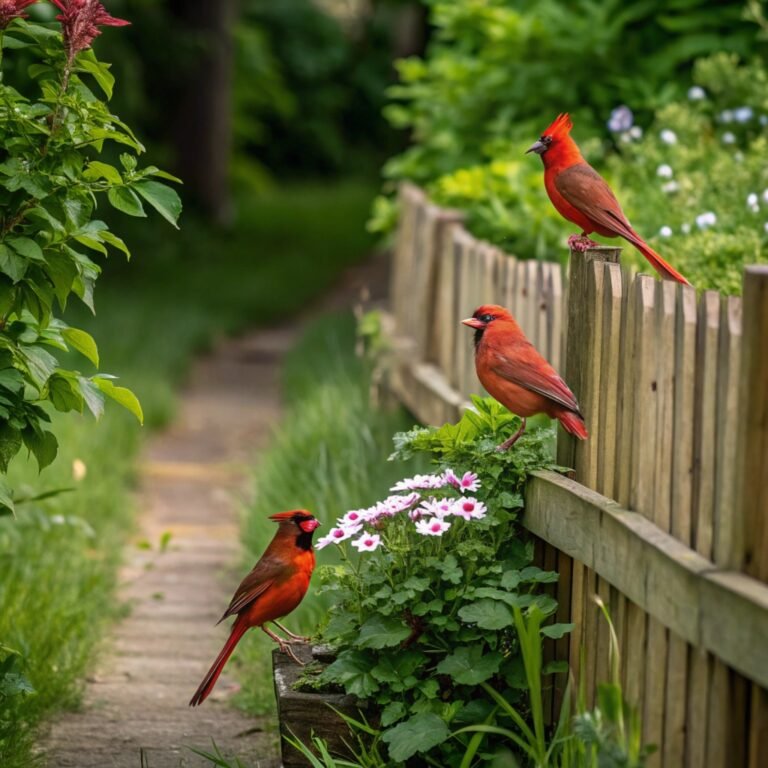Daytime Sightings of Barred Owls: An Amazing Guide
The barred owl, a fascinating nocturnal predator, has been known to make occasional appearances during daylight hours, piquing the curiosity of birdwatchers and nature enthusiasts alike.
This comprehensive guide delves into the intriguing world of barred owls and their daytime activities, providing valuable insights for those eager to spot these elusive creatures outside their typical nocturnal realm.

Key Takeaways:
- Nocturnal Nature: Barred owls are primarily active at night, but may be seen during the day under certain circumstances.
- Habitat Preference: They favor mixed forests with large trees, often near water bodies.
- Daytime Roosting: During daylight hours, barred owls typically roost on branches or in tree cavities.
- Hunting Habits: While mainly nocturnal hunters, they might hunt during the day in specific situations.
- Distinctive Call: Their unique vocalization sounds like “who cooks for you; who cooks for you all!“
- Adaptability: Barred owls can thrive in various environments, from wilderness areas to suburban woodlots.
- Prey Diversity: Their diet includes a wide range of small animals, from mammals and birds to fish and invertebrates.
- Territorial Behavior: They are territorial year-round, becoming even more aggressive during nesting season.
- Conservation Implications: Understanding their behavior is crucial for urban planning and wildlife conservation efforts.
- Daytime Sightings: Cloudy days or specific environmental factors may increase the likelihood of observing barred owls during daylight hours.
The Nocturnal Nature of Barred Owls
Barred owls are primarily nocturnal creatures, meaning they are most active during the night. Their biological clock is attuned to darkness, making them perfectly adapted for nighttime hunting and other activities.
This nocturnal lifestyle is supported by their highly developed sensory systems, particularly their exceptional night vision and acute hearing.
The large, dark eyes of barred owls are specially designed to gather as much light as possible, allowing them to see clearly in low-light conditions.
Their facial disk, a distinctive feature of owls, helps to funnel sound to their ears, enabling them to pinpoint the location of prey with remarkable accuracy.
These adaptations make barred owls formidable nighttime predators, perfectly suited to their nocturnal existence in the forests they call home.
Typical Daytime Behavior of Barred Owls
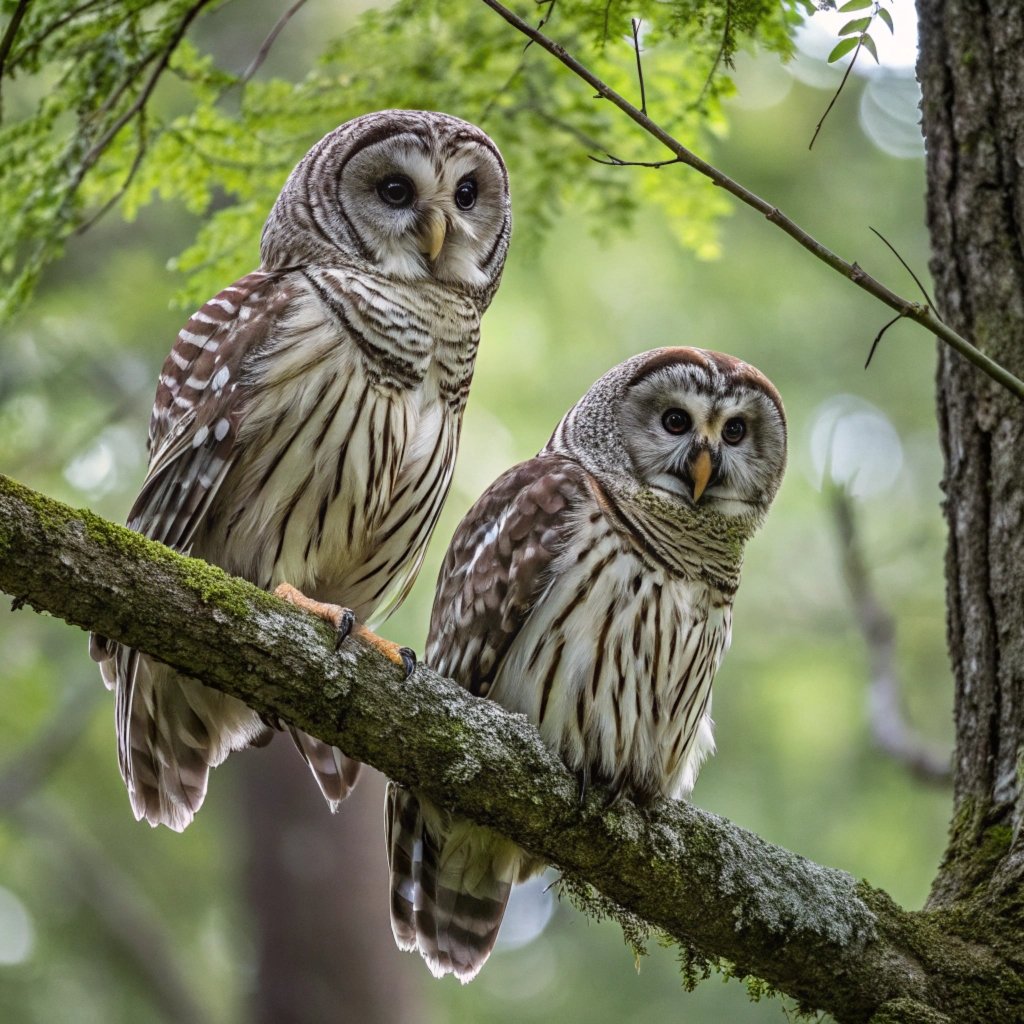
During daylight hours, barred owls generally engage in resting and roosting behaviors. They often seek out quiet, shaded spots in dense foliage or tree cavities to sleep and conserve energy for their nighttime activities.
These roosting sites provide protection from both the sun and potential daytime predators. Barred owls are known to have a strong preference for mature forests with large trees, which offer ample roosting opportunities.
While roosting, they may appear motionless, with their eyes closed or barely open, blending seamlessly with their surroundings. This camouflage is crucial for their daytime safety.
However, even during their rest periods, barred owls remain alert to their environment, capable of quickly responding to any potential threats or unusual sounds in their vicinity.
Reasons for Daytime Activity in Barred Owls
While barred owls are predominantly nocturnal, there are several reasons why they might be active or visible during daylight hours. One common cause is disturbance to their roosting site, which may force them to relocate during the day.
Additionally, during the breeding season, increased energy demands might necessitate daytime hunting, especially when feeding young.
Cloudy or overcast days can also prompt barred owls to be more active, as the reduced light levels are more comfortable for their sensitive eyes.
In some cases, habitat loss or changes in their environment might alter their typical behavior patterns, leading to more frequent daytime sightings.
It’s also worth noting that young barred owls, still learning about their environment, may be more likely to be seen during the day as they explore their surroundings and practice hunting skills.
Habitat Preferences and Their Impact on Daytime Sightings
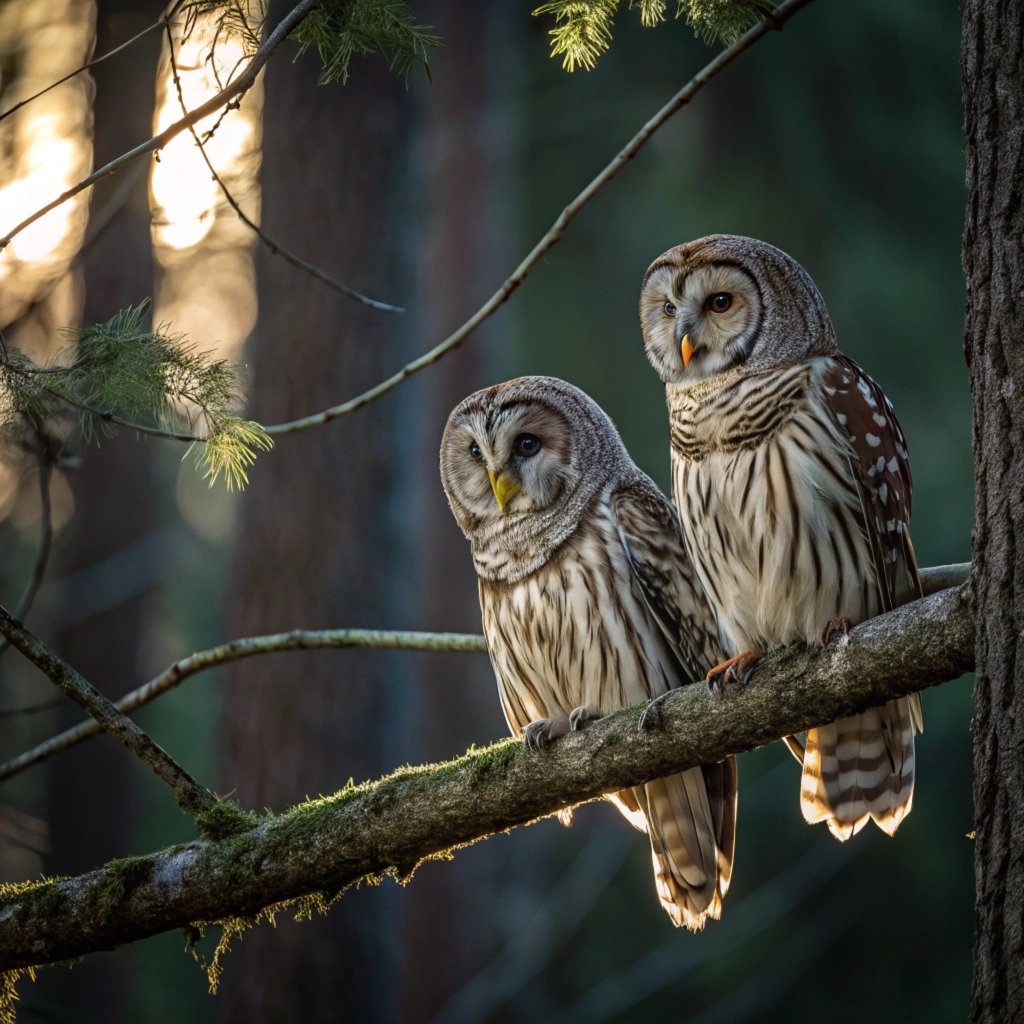
Barred owls show a strong preference for mixed forests with large, mature trees, often near water sources. This habitat choice significantly influences the likelihood of daytime sightings.
Forests with a dense canopy provide ideal roosting spots, offering shade and protection during daylight hours.
The proximity to water is not just a matter of preference; it often correlates with a higher diversity of prey and more suitable nesting sites.
In urban or suburban areas, barred owls may adapt to parks or wooded neighborhoods that mimic their natural habitat.
Interestingly, studies have shown that barred owls in Baton Rouge, Louisiana, demonstrated a preference for habitats in affluent neighborhoods, possibly due to the presence of larger, more mature trees and green spaces in these areas.
This adaptability to various environments, from wilderness to urban settings, increases the chances of daytime encounters across different landscapes.
Identifying Barred Owls During the Day
Spotting a barred owl during daylight hours can be a thrilling experience for birdwatchers and nature enthusiasts.
These owls are medium-sized, with a rounded head lacking ear tufts, which distinguishes them from other owl species.
Their plumage is a mottled brown and white, with distinctive vertical streaks on the belly and horizontal bars on the chest, giving them their name.
During the day, barred owls often perch upright on tree branches, close to the trunk, where their coloration provides excellent camouflage.
Look for their large, dark eyes and the characteristic facial disk that surrounds them.
When alert, barred owls may exhibit a slight swaying motion, which helps them gauge distances and detect movement.
If you’re lucky enough to spot one, remember to maintain a respectful distance to avoid disturbing the owl’s daytime rest.
Barred Owl Hunting Techniques: Day vs. Night
While barred owls are primarily nocturnal hunters, they may occasionally hunt during the day, especially in low-light conditions or when food is scarce. Their hunting techniques can vary between day and night.
During nighttime hunts, barred owls rely heavily on their exceptional hearing and night vision, often employing a sit-and-wait strategy from an elevated perch.
They swoop down silently on unsuspecting prey, using their sharp talons to capture it. In contrast, daytime hunting, though less common, may involve more visual cues.
Barred owls might be seen actively scanning their surroundings from a perch or even engaging in short flights to chase prey.
Interestingly, these owls are known to wade into shallow water to catch aquatic prey like fish or amphibians, a behavior that might be more easily observed during daylight hours.
The Diet of Barred Owls and Its Influence on Activity Patterns
The diverse diet of barred owls plays a significant role in shaping their activity patterns, including potential daytime appearances.
These versatile predators consume a wide range of prey, including small mammals, birds, amphibians, reptiles, and even fish and invertebrates. This dietary flexibility allows them to adapt to various habitats and food availability.
During the night, they might focus on nocturnal mammals like mice and voles. However, when hunting during the day, they may target diurnal prey such as squirrels or birds.
The energy requirements of barred owls, especially during breeding season when feeding young, can influence their hunting times.
If nighttime hunting doesn’t yield sufficient food, they may be compelled to hunt during daylight hours.
Additionally, the availability of certain prey species during the day might occasionally lure these typically nocturnal hunters into daytime activity.
Seasonal Variations in Barred Owl Behavior
Barred owl behavior can vary significantly with the changing seasons, affecting the likelihood of daytime sightings.
During the breeding season, typically from late winter to early spring, barred owls become more active and vocal, even during daylight hours.
This increased activity is related to courtship, nest selection, and territorial defense. In winter, shorter days and harsher weather conditions might occasionally force barred owls to hunt during twilight or early morning hours, increasing the chances of daytime observations.
Conversely, in summer, the abundance of prey and longer nights usually mean less daytime activity.
However, when raising young, parent owls might hunt during the day to meet the increased food demands of their offspring.
Seasonal changes in forest canopy density can also affect visibility, potentially making barred owls more or less conspicuous depending on the time of year.
Barred Owl Interactions with Urban Environments
As human development expands, barred owls have shown a remarkable ability to adapt to urban and suburban environments. This adaptation has led to increased daytime sightings in populated areas.
In urban settings, barred owls often inhabit parks, cemeteries, and wooded residential areas that provide suitable habitat. Their presence in these areas can lead to more frequent human encounters, especially during the day.
Urban barred owls may alter their behavior to cope with artificial lighting and noise, sometimes becoming more tolerant of human presence.
However, this proximity to human activity can also pose challenges, such as increased risk of collisions with vehicles or buildings.
Urban planners and wildlife managers are increasingly considering the needs of species like barred owls in urban green space design, recognizing the importance of maintaining suitable habitats within city limits.
Conservation Implications of Barred Owl Behavior
Understanding barred owl behavior, including their daytime activities, has significant implications for conservation efforts.
As these owls adapt to various habitats, including urban areas, their conservation needs become more complex.
The preservation of mature forests and green spaces in urban settings is crucial for maintaining barred owl populations.
Their ability to thrive in some urban environments demonstrates the importance of urban wildlife corridors and the maintenance of large trees in city parks and suburbs.
However, the barred owl’s success has led to challenges in some regions, particularly in the western United States, where they compete with the endangered spotted owl.
This situation has sparked debates about management strategies and the balance between conserving native species and adapting to changing ecosystems.
Monitoring daytime activities and habitat use helps conservationists better understand the needs of barred owls and develop effective protection strategies.
Tips for Observing Barred Owls Safely and Ethically
For those eager to observe barred owls during the day, it’s crucial to do so responsibly. First and foremost, maintain a respectful distance to avoid disturbing the owl.
Use binoculars or a spotting scope for close-up views rather than approaching the bird. If you locate a roosting site, limit your visits and avoid revealing the location to prevent overcrowding.
Photography should be done without flash and from a distance that doesn’t cause the owl to alter its behavior. Be mindful of your surroundings and avoid damaging the habitat.
Early morning or late afternoon are often the best times for potential daytime sightings. Listen for their distinctive calls, which they might make even during the day.
Remember, the welfare of the owl always comes first. By observing ethically, you contribute to the conservation of these magnificent birds while enjoying a rare daytime glimpse into their world.
The Role of Barred Owls in Ecosystem Balance
Barred owls play a crucial role in maintaining ecosystem balance, and their daytime activities can offer insights into this function.
As top predators, they help control populations of small mammals and other prey species, which can have cascading effects throughout the food web.
Their presence or absence in an area during daylight hours can be an indicator of ecosystem health and prey availability.
Barred owls also contribute to forest health by controlling rodent populations that might otherwise damage trees and vegetation. In urban and suburban areas, their predation on rodents can be particularly beneficial.
Additionally, barred owls serve as indicator species, their well-being reflecting the overall health of their habitat.
Observing their behavior, including any unusual daytime activity, can provide valuable data for ecologists and conservationists studying forest ecosystems and the impacts of urbanization on wildlife.
Comparing Barred Owl Behavior with Other Owl Species
When considering daytime sightings, it’s interesting to compare barred owl behavior with that of other owl species.
Unlike some owls, such as the diurnal burrowing owl, barred owls are not typically active during full daylight.
However, they may be more likely to be seen during the day than strictly nocturnal species like the great horned owl. The spotted owl, a close relative of the barred owl, shares similar habits but is generally even more secretive.
Barred owls’ adaptability to urban environments sets them apart from many other owl species, potentially increasing the likelihood of daytime encounters in populated areas.
Their distinctive call and larger size make them easier to identify compared to smaller owl species that might also be occasionally active during the day.
Understanding these differences can help birdwatchers and researchers better interpret and appreciate any daytime owl sightings they may experience.
FAQs
What should I do if I see a barred owl during the day?
If you encounter a barred owl during daylight hours, observe it quietly from a distance. Avoid approaching or disturbing the owl, as it may be resting or roosting. Use binoculars for a closer view, and enjoy this rare opportunity to see a nocturnal creature during the day.
Is it normal for barred owls to be active during the day?
While not common, it’s not unusual for barred owls to be occasionally active during the day. This behavior can be more frequent during breeding season, on cloudy days, or when food is scarce.
How can I attract barred owls to my property for daytime viewing?
To increase the chances of barred owl sightings, maintain mature trees on your property and create a wildlife-friendly environment. However, it’s important to let owls choose their habitat naturally rather than actively trying to attract them.
Are barred owls dangerous to humans or pets during the day?
Barred owls are not typically dangerous to humans. However, they may become defensive if they feel threatened, especially near their nests. Keep pets, particularly small ones, supervised in areas where barred owls are known to reside.
How can I distinguish between a barred owl and other owl species during the day?
Barred owls are distinguished by their large size, lack of ear tufts, and distinctive brown and white barred pattern. Their round head and dark eyes are also characteristic features that set them apart from other owl species.

Hello, I’m Emily Price, the founder of Birds Affection. As a passionate bird enthusiast and spiritual seeker, I’ve always been fascinated by the symbolic meanings and mystical connections between birds and our lives. On this website, I share my knowledge and insights on the spiritual significance of various bird species, exploring their roles as messengers, guides, and teachers. Through my writing, I aim to inspire and educate others on the profound wisdom and beauty that birds bring to our world. Join me on this journey as we delve into the enchanting realm of bird symbolism and discover the hidden meanings behind these magnificent creatures.


